The 6th of September 1965 is often deemed as the finest hour for our nation’s military. As its anniversary rolls around each year, Pakistanis from all walks of life reminisce with pride how our forces, outnumbered and outgunned, held back a naked external aggression. The day marks a period our nation found many of its military heroes – on land and in the air. Tales of their remarkable feats are recounted and celebrated come Defence Day.
The past two decades have witnessed our forces engage with a different breed of adversary. As opposed to external force, they faced off against an internal enemy, invisible and unbound from any code prescribed by the Geneva Convention. This enemy targeted mercilessly not only our defenders but citizens too – innocent men, women and children. The fight against it was bloody – victories measured in inches rather than miles. The fight, codenamed Zarb-e-Azb, yielded an emphatic victory over terrorists who were completely routed and their strongholds decimated along the border with Afghanistan.
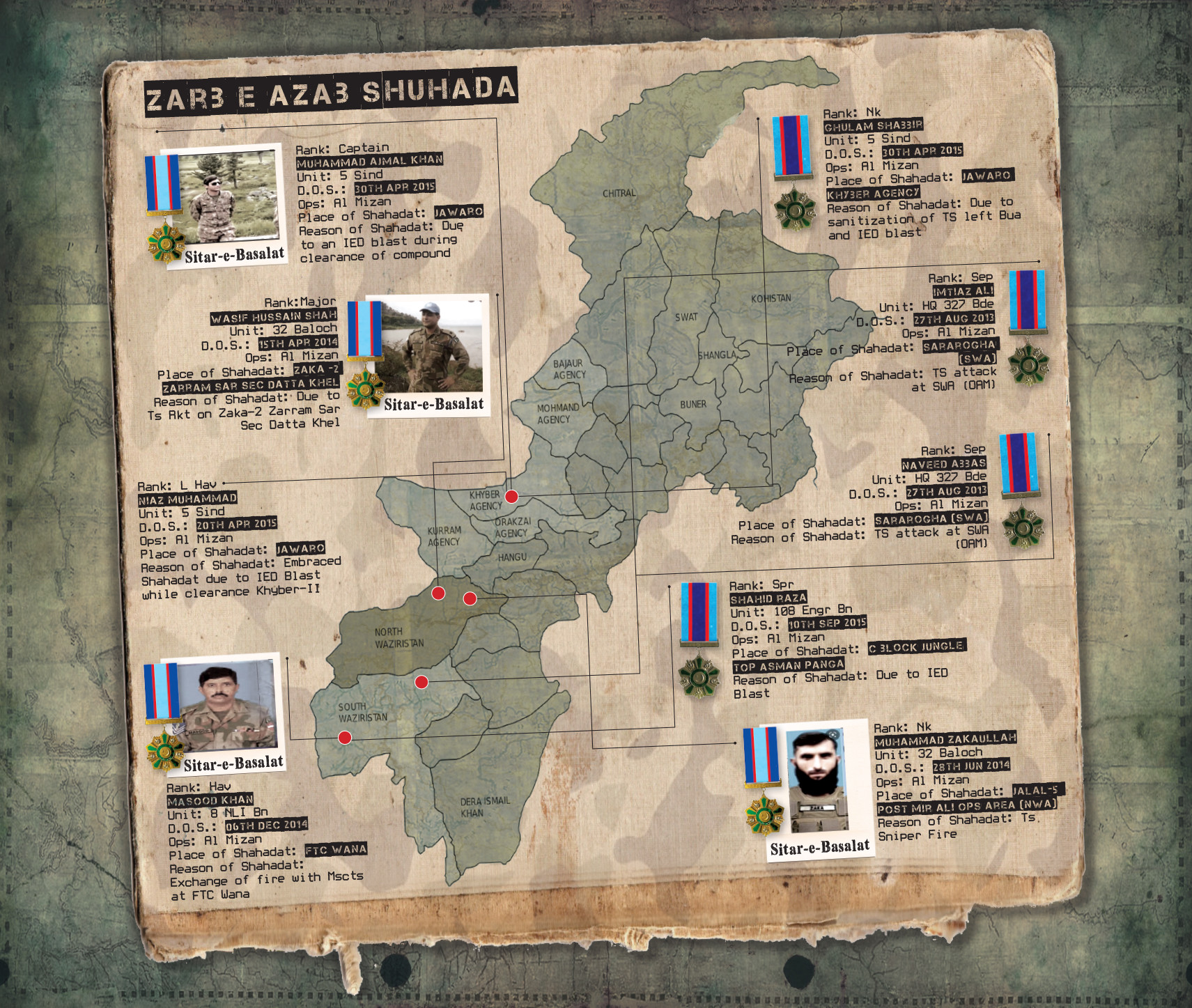 Like 1965, the fight uncovered its fair share of heroes too, but their stories have so far largely been unknown to the public at large. Let us then, this September, look back on just some of these tales of valour from the most hostile and treacherous battlefront.
Like 1965, the fight uncovered its fair share of heroes too, but their stories have so far largely been unknown to the public at large. Let us then, this September, look back on just some of these tales of valour from the most hostile and treacherous battlefront.
The battle to secure Boya
* Naik Hazrat Ud Din
* Lance Naik Muhammad Ilyas
It is September 24, 2014. The 10th Northern Light Infantry is tasked to capture a picket on a mountaintop terrorists have been using to fire rockets, carry out ambushes and plant home-made bombs on the main supply route in Boya, a notorious militant stronghold in North Waziristan Agency [now tribal district of K-P]. Havaldar Kamran Hussain leads a party to capture the picket. The terrorists are in a strong firing position from where they can watch every movement on the ground.
Havaldar Kamran moves towards position along with Sepoy Muhammad Hassan. But they fail to evade the enemy snipers. A gunshot rings out. The bullet hits Hassan on the left side of his abdomen. He is bleeding profusely – but is still alive. He collapses, and then tries to stand but the searing pain makes him stoop back over.
In the meantime, Havaldar Kamran quickly takes cover but keeps his wits about. He tends to the wounds of his injured comrade to stop the bleeding, and decides to evacuate him to safety, risking his own life. It is difficult to escape the terrorists’ watch with the injured Hassan on his shoulders. Another gunshot crackles. The bullet tears through the jacket of Kamran and pierces his abdomen. Blood gushes out, he staggers to his feet, sways a little but doesn’t stop until he evacuates Hassan to safety. Oblivious of his own serious injuries, he cries for his wounded comrade.
The two brothers in arms are evacuated to a military hospital where Kamran embraces shahadat due to excessive bleeding, while Hassan cheats death by a whisker.

With Kamran down, Naik Hazrat Ud Din, takes up the command to lead the scouts and keeps moving towards the target. He ensures an intelligent use of the terrain by his troops. The snipers are outmaneuvered. This tactical move forces the terrorists to vacate their positions. However, in the process, a sniper bullet whizzes through the hollow part of Naik Hazrat Ud Din’s bullet-proof vest and pierces his left flank in the chest. He embraces Shahadat on the spot.
The fatalities do not go to waste. The troops successfully capture the picket. Terrorists hiding in nearby mountains fire a salvo. A heavy gunfight ensues – and continues sporadically for two hours. The troops stand their ground, forcing the terrorists to beat a retreat. Before fleeing, however, the terrorists fire RPGs at the picket. One of the rockets slams into the ground near Lance Naik Muhammad Ilyas. Splinters tear through his helmet, piercing his skull and resulting in instant death.
Bravo Company to the rescue
* Major Wasif Hussain Shah
* Subedar Muhammad Jahangir Ahmed
Major Wasif Hussain Shah of the 32 Balochistan Regiment has led his Bravo Company in several missions against terrorists during Operation Zarb-e-Azb. The company successfully captured the strategic Zarram Sar Ridge in Datta Khel Sector in October, 2014.
It’s November 15, 2014, around 5pm. The winter sun is setting behind the rugged, treacherous mountains. Suddenly, more than a hundred terrorists armed with AK-47 assault rifles, rocket-propelled grenades (RPGs) and mortars descended on one of the posts, Zarram-3, in an attempt to overrun it. A message is radioed to the company headquarters, Zarram-2.
Maj Wasif moves to relieve the besieged post. The attackers outnumber the defenders, but Maj Wasif and his troops engage them in a fierce fight for more than two hours. The terrorists have unleashed their full fury – 12.7mm rounds, rockets and mortars are going off like fireworks. AK-47 bullets are whizzing all around. Battle cries are ringing out. The evening air is filled with the heavy smell of gunpowder. The two posts are under massive attack from all directions.
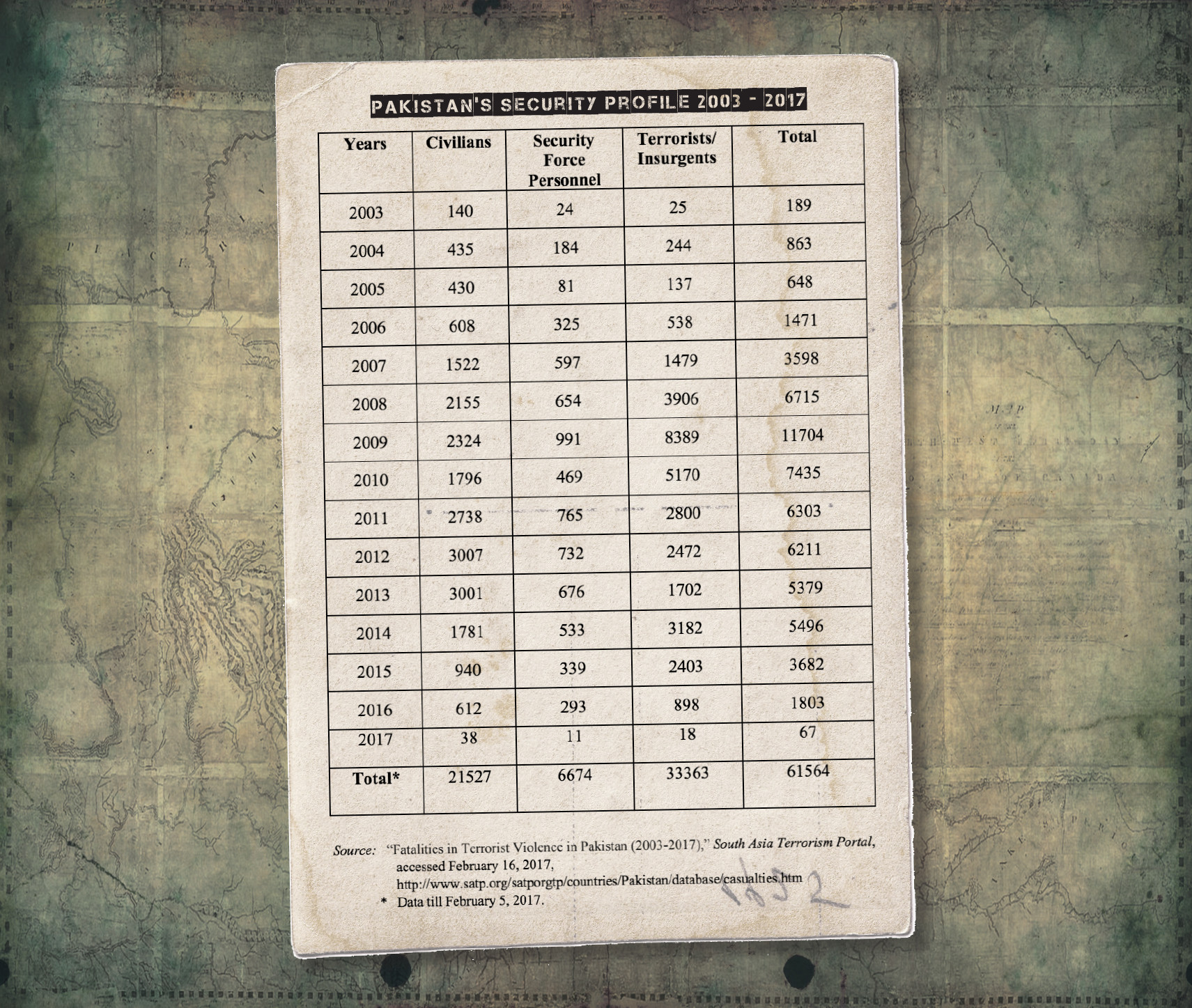 Maj Wasif is already hit by two bullets – one in the shoulder and the other in the collar bone. But the brave officer refuses to relent, stands his ground and continues leading his troops in defence of the two posts. Two hours into the fierce battle, a mortar slams into the ground near him, shrapnel piercing through his jawbone and neck. He dies instantly – and so does his runner, Sepoy Ayaz. In an exceptional example of leadership and courage, Maj Wasif goes down defending his AOR (area of responsibility).
Maj Wasif is already hit by two bullets – one in the shoulder and the other in the collar bone. But the brave officer refuses to relent, stands his ground and continues leading his troops in defence of the two posts. Two hours into the fierce battle, a mortar slams into the ground near him, shrapnel piercing through his jawbone and neck. He dies instantly – and so does his runner, Sepoy Ayaz. In an exceptional example of leadership and courage, Maj Wasif goes down defending his AOR (area of responsibility).
Subedar Muhammad Jahangir Ahmed, SJCO Bravo Company, who radioed the terrorist assault to the company headquarters, successfully defends the post until Company Commander Maj Wasif reaches with reinforcements. Subedar Jahangir fights valiantly alongside Maj Wasif and other comrades to defend his BOO (base of operation).
At 7:25pm, Maj Wasif embraces martyrdom. Subedar Jahangir takes over the command and keeps the attackers at bay for another two hours. Night falls but the onslaught remains unabated in intensity and ferocity. A rocket hits Subedar Jahangir’s bunker. He receives critical shrapnel wounds – but stands his ground unruffled. He moves to adjoining bunkers and engages the terrorists in a duel – not for a long, though. The terrorists overwhelm the bunkers and Subedar Jahangir goes down in close quarters combat with them. Not only do the combat troops display heroics in this battle, but support soldiers also participate in the fighting. While terrorists swarm the post, Naik Muhammad Javed Akhtar, DMT (driver motor transport) decides to evacuate his wounded comrades while rockets are exploding all around. The fearless soldier moves to a forward bunker to retrieve the injured. A rocket slams into the ground near him tossing him off the cliff into a ravine. Naik Akhtar smashes his head against a huge boulder and dies on the spot.
For his distinguished acts of gallantry and valour in this action, Maj Wasif is awarded the Sitara-e-Basalat.
HVT located, eliminated
*Havaldar Masood Khan
It’s December 6, 2014. Intelligence is received about the presence of a HVT (high value target) – top al Qaeda leader Adnan al Shakri al Jummah is believed to be in a compound in the Kari Kot area of Shin Warsak in South Waziristan Agency [now tribal district of K-P], the once notorious bastion of the deadliest Tehreek-e-Taliban Pakistan militant group. An action party is mobilised for an intelligence-based operation (IBO). Maj Rehmat Ullah is leading the party.
They sneak into the compound unnoticed and unchallenged. Their objective is to apprehend the high-value target alive. Havaldar Masood Khan is tasked with laying the charge at the main door of the room in which al Jummah is believed to be present. The strategy is to blow off the door to facilitate the action party’s charge into the room. Al Jummah somehow gets alerted. As soon as Havaldar Masood tiptoes to the door, al Jummah suddenly emerges, lobs a hand grenade and rushes back inside. Bang! Havaldar Masood receives splinter wounds but manages to lay the charge.
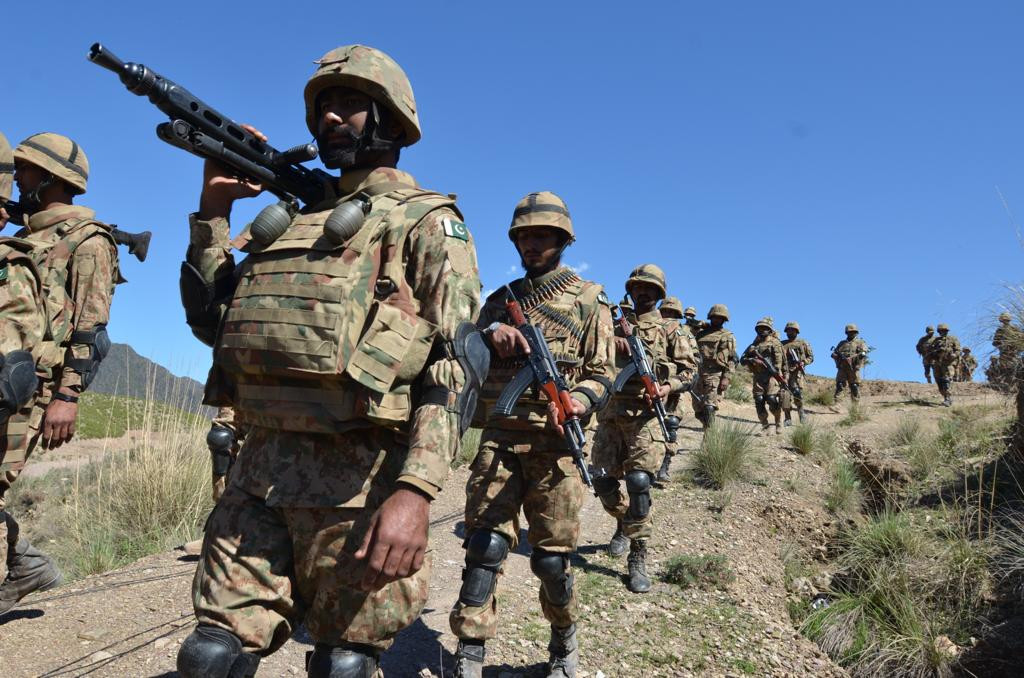
He has hardly set the explosives when al Jummah reappears – firing heavily and randomly with an assault rifle. Since Havaldar Masood is positioned right in front of the door, he is hit by multiple bullets. He collapses to the ground. Al Jummah is now out in the courtyard of the compound. The action party takes him down within no time. The mission is accomplished. Havaldar Masood is evacuated to a military hospital in Wana, the main town of South Waziristan, but he succumbs to his critical wounds en route. He is awarded the Sitara-e-Basalat in recognition of his gallant actions.
No man left behind
* Naik Muhammad Zaka Ullah
Naik Muhammad Zaka Ullah is an indispensable member of the Battalion Command Platoon at Jalat-5 post, Mir Ali, North Waziristan Agency [now tribal district of K-P].
It’s June 28, 2014, less than two weeks into Operation Zarb-e-Azb. The clock strikes 3:30pm. A terrorist sniper opens fire on Jalat-5 post and Lance Naik Ubaid Ullah embraces Shahadat. His body slips into a deep gorge in the mountainous region. It’s difficult to retrieve the corpse. The terrorists continue to target the post with heavy fire. Their snipers are entrenched in effective positions.
 When all efforts to bring back the fallen soldier’s body fail, Naik Zaka Ullah steps forward, and volunteers to take up the task fraught with peril. A three-man evacuation party is quickly assembled. They crawl to the site under the hail of gunfire. Naik Zaka Ullah stays on to provide cover to the troops retrieving the body. He ensures the troops reach a pre-designated safe point. With his task accomplished, Zaka Ullah begins to move back, but a terrorist sniper spots him. A gunshot rings out and Zaka Ullah is hit. The bullet hits him in the face and pierces through his head. He dies on the spot setting a loft example of camaraderie. Naik Zaka Ullah is awarded the Sitara-e-Basalat for his courage under fire.
When all efforts to bring back the fallen soldier’s body fail, Naik Zaka Ullah steps forward, and volunteers to take up the task fraught with peril. A three-man evacuation party is quickly assembled. They crawl to the site under the hail of gunfire. Naik Zaka Ullah stays on to provide cover to the troops retrieving the body. He ensures the troops reach a pre-designated safe point. With his task accomplished, Zaka Ullah begins to move back, but a terrorist sniper spots him. A gunshot rings out and Zaka Ullah is hit. The bullet hits him in the face and pierces through his head. He dies on the spot setting a loft example of camaraderie. Naik Zaka Ullah is awarded the Sitara-e-Basalat for his courage under fire.
A sneak attack thwarted
* Sepoy Imitaiz Ali (Shaheed)
* Sepoy Naveed Abbas (Shaheed)
It’s August 26, 2013, past midnight. Over two dozen terrorists sneak into the 327 Brigade Headquarters in Sararogha, South Waziristan Agency [now tribal district of K-P] – the once notorious bastion of the outlawed TTP. Five of the attackers are wearing suicide vests. And their mission is to kill or capture the brigade command echelon. They head directly to the main compound.
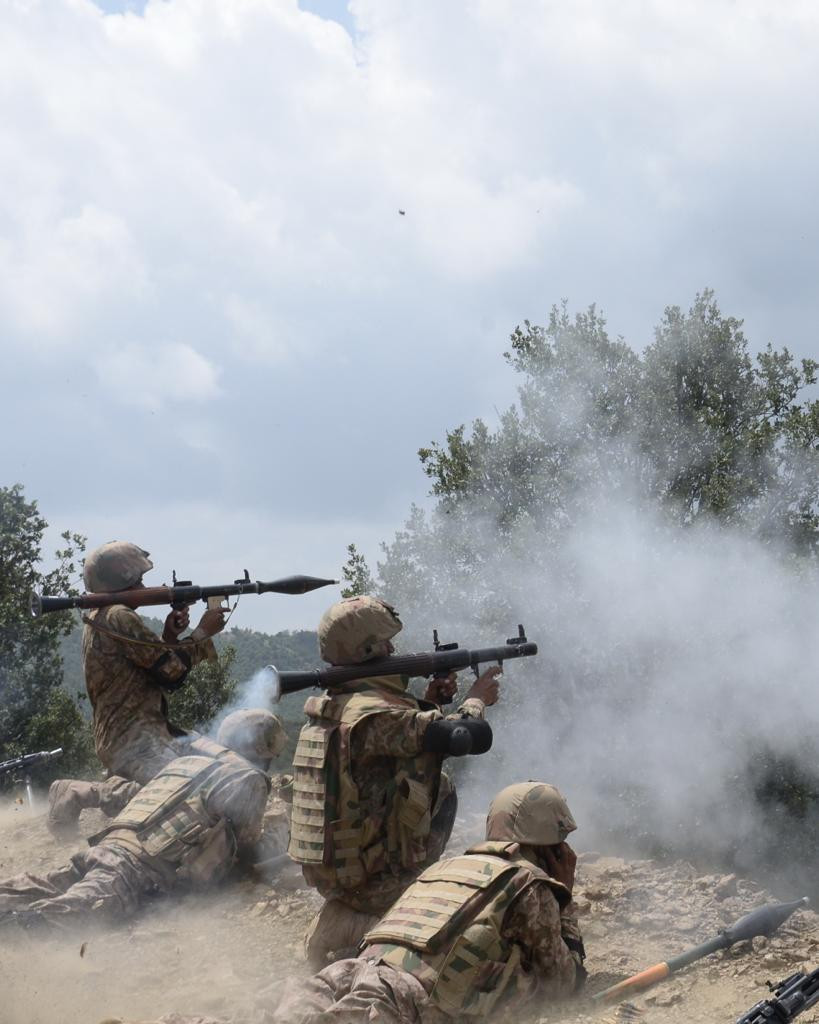 Sepoy Imtiaz Ali is standing guard at a bunker on the perimeter wall of the camp near the Offices area. The terrorists fail to achieve their primary mission. Frustrated, they look for ‘opportunity targets’ near the Offices Area. Here, they target the bunker from the rear. The crackle of gunshots alerts Sepoy Imtiaz. He doesn’t panic. Undeterred, he comes out to engage the unseen intruders. Sepoy Imtiaz is exposed to direct fire from two suicide bombers who are hardly 25 metres away. They are taken aback.
Sepoy Imtiaz Ali is standing guard at a bunker on the perimeter wall of the camp near the Offices area. The terrorists fail to achieve their primary mission. Frustrated, they look for ‘opportunity targets’ near the Offices Area. Here, they target the bunker from the rear. The crackle of gunshots alerts Sepoy Imtiaz. He doesn’t panic. Undeterred, he comes out to engage the unseen intruders. Sepoy Imtiaz is exposed to direct fire from two suicide bombers who are hardly 25 metres away. They are taken aback.
Sepoy Imtiaz pushes them back – but then one of them lobs a hand grenade. Bang. The grenade lands near Sepoy Imtiaz – and he receives shrapnel wounds to his abdomen and shoulder. The wounds are critical, but he refuses to relent and takes out one of the intruders. The second bomber finds the opportunity to fire back at him. Three bullets pierce through the thighs of the fearless soldier. He collapses to the ground, but doesn’t stop firing. The bomber is forced to retreat. He runs away from the Brigade Headquarters compound to take cover. After the camp is cleared by troops, Sepoy Imtiaz is evacuated for first aid at a local health facility. His wounds are critical – and need specialised treatment. He is calm and composed. He is airlifted to a hospital but succumbs en route.
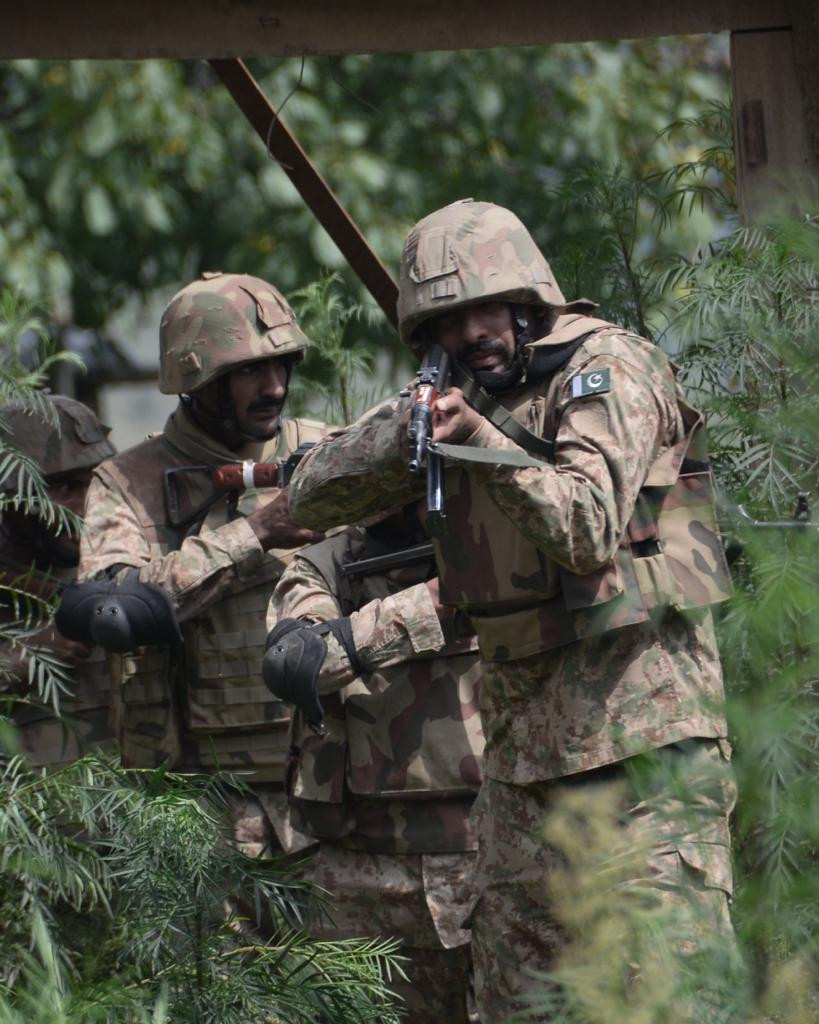
Another example of bravery is set by Sepoy Naveed Abbas, the Regimental Police Sentry. He’s checking camp sentries for alertness near the Offices Area. He spots two attackers armed with assault rifles, grenades and suicide vests. Sepoy Naveed immediately takes position near the General Staff Branch and engages the terrorists. They are unnerved by the quick and sudden fire. One of them panics and detonates the explosives strapped to his body near the eastern wall of the General Staff Branch. Sepoy Naveed is hit by shrapnel. He rushes to rescue his comrades from underneath the rubbles of the damaged office building. As Sepoy Naveed digs through the debris with bare hands to pull out his comrades, the second bomber blows himself up near the western wall of the same building, striking perilously close to Sepoy Naveed Abbas. He receives fatal injuries and embraces martyrdom on the spot.
Both Sepoy Imtiaz and Sepoy Naveed receive the Tamgha-e-Basalat for thwarting the terrorist assault and keeping the brigade command safe.
Through the valley of bombs
* Sapper Shahid Raza Shaheed
Sapper Shahid Raza of 108 Engineering Battalion is temporarily attached with 41 Frontier Force Regiment. He is deployed at Ihsan base of operation (BOO) as part of a bomb disposal party during the Shawal operation in the final phase of Operation Zarb-e-Azb. Shawal is a strategic valley on the confluence of borders between North and South Waziristan and also shares a border with Afghanistan. Loyalists of Taliban commanders Hafiz Gul Bahadur and Khan Said, alias Sajna, and their foreign cohorts, who have fled military action elsewhere in North Waziristan, are holed up in this densely forested valley. Finding nowhere to escape, they are determined to fight till their last breath. They have rigged the valley with homemade bombs to halt the march of advancing troops.
Sapper Raza has carried out several sanitisation operations in the valley. It’s a misty morning on September 10, 2015. The summer has ended. The military plans to clear the region before the hostile winter sets in. A 41FF party marches out of the BOO. Their mission is to occupy forward Listening Posts, nearly 400 yards northwest of the main post towards Dabri village. Sapper Shahid Raza is accompanying the troops to scan the area for possible IEDs, the weapon of choice for terrorists. As the troops reach close to a western bunker of a Listening Post, Sapper Raza shouts, “Halt.” He has picked up an IED. He quickly surveys area, marks the homemade bomb, and asks his comrades to occupy nearby abandoned bunkers. Then he moves out alone, walking cautiously to sanitise the area. In the meantime, he spots another IED – but before he can move to defuse it, terrorists hiding in nearby mountains remotely detonate the device. Sapper Raza dies on the spot after receiving multiple shrapnel wounds. His act of moving out alone to neutralise the IED saves the lives of his fellow troops and is recognized with the Tamgha-e-Basalat.
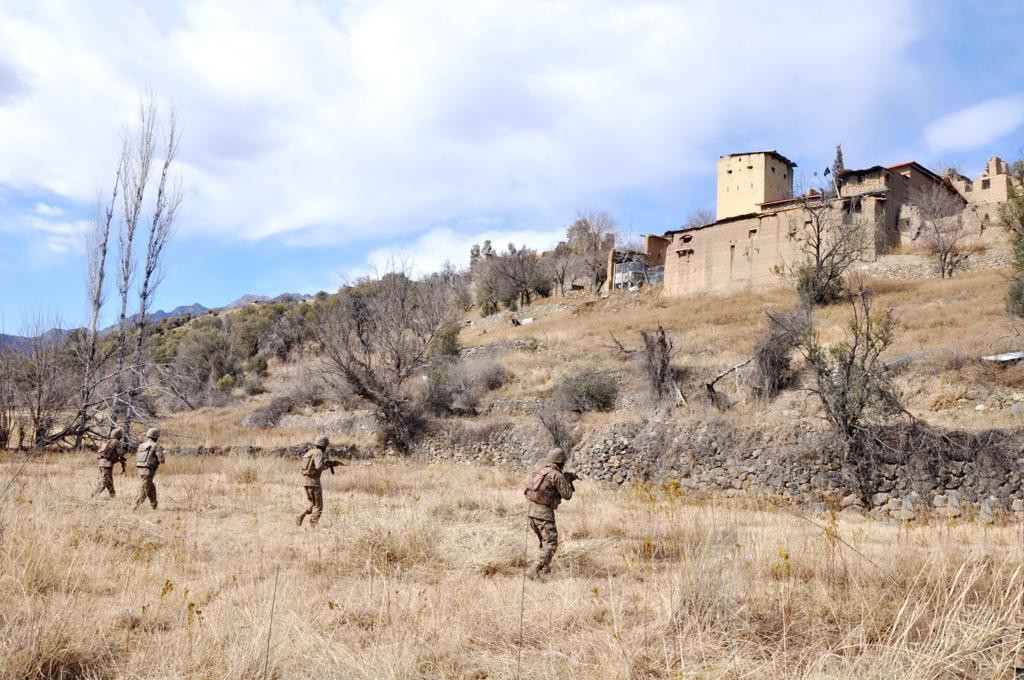
Hot pursuit in Bara
* Captain Muhammad Ajmal Khan
* Havaldar Niaz Muhammad
* Naik Ghulam Shabbir
While Operation Zarb-e-Azb rages on in North Waziristan Agency, the military in hot pursuit of fleeing terrorists mounts an offensive Khyber-I in the Bara subdivision of Khyber Agency. By March 2015, the area is cleansed. A follow-on operation, codenamed Khyber-II, is launched in Tirah Valley, where Lashkar-e-Islam, a sectarian extremist group of Mangal Bagh Afridi, virtually holds sway. The outlawed Tehreek-e-Taliban Pakistan, its breakaway Jamaatul Ahrar faction and sundry terrorists have also come to aid Bagh and form a united front against the military. The hostile and fierce terrain of Tirah consisting of deep valleys and high mountains make it a big challenge for the military.
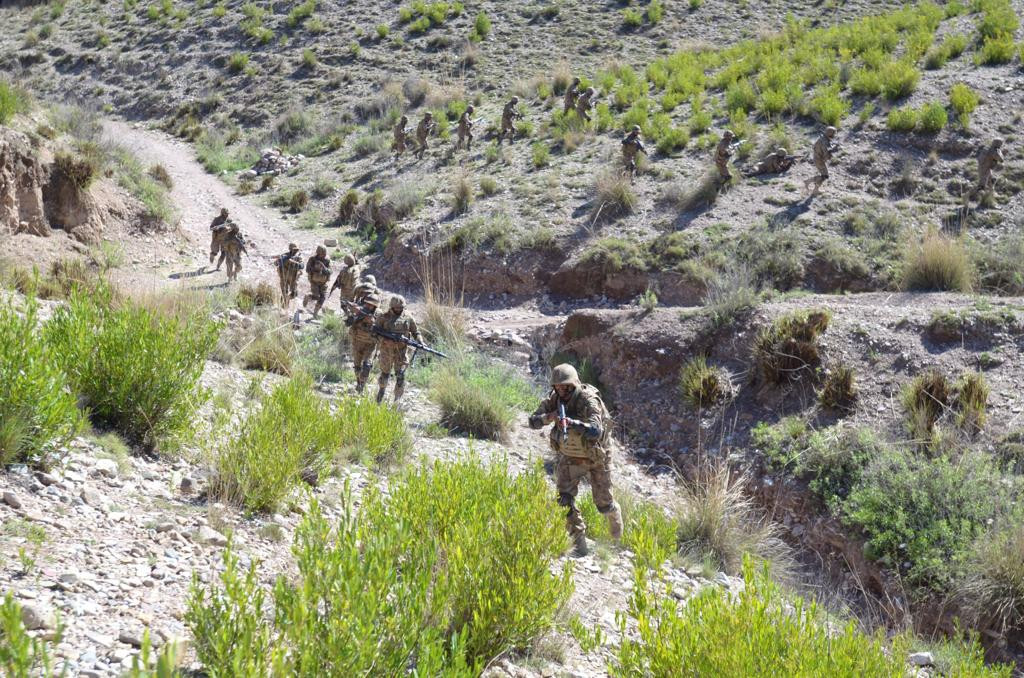
During Operation Khyber-II, Captain Muhammad Ajmal Khan of 5 Sindh Regiment and his company is tasked to comb the northern side of Jawaro Ridge for possible IEDs. Around noon on April 29, 2015, Captain Khan’s company has successfully secured the western half of the objective. Terrorists flee the northern ridge. But before fleeing, they rig the area with IEDs. As night falls, Captain Khan stops sanitisation and prepares defences in anticipation of nighttime raids by terrorists. Early next morning, Captain Khan’s company resumes sanitisation of the ridge and within two hours, they successfully dispose of six homemade bombs planted by terrorist. The mission is complete. The northern side of the Jawaro Ridge is cleared of IEDs. However, Captain Khan decides to clear an abandoned terrorist compound on the northern slope of the ridge as it is obstructing the forward view towards the Bara River. Around 12:30 a.m., when the bomb disposal team is sanitising the compound, they spot an IED. Captain Khan is present at the spot to encourage the bomb disposal team. Boom. The bomb goes off, perhaps remotely triggered by terrorists. Captain Khan, along with his four comrades, including Havaldar Niaz Muhammad and Naik Ghulam Shabbir, is killed on the spot.
Captain Khan is awarded the Sitara-e-Basalat, while Naik Ghulam Shabbir receives the Tamgha-e-Basalat for his courageous role in this action.
One against five
* Captain Asfandyar Bokhari
* Naik Muhammad Tariq Kayani
Captain Asfandyar Bokhari of the 11 Frontier Force Regiment is posted as G-3 Officer of 102 Brigade in Peshawar. It is September 18, 2015, 5:20 in the morning. Over a dozen terrorists donning Frontier Constabulary uniforms mount a brazen attack on the PAF camp in Badhber, located on the edge of Peshawar. Two of them head straight to a mosque in the camp where worshippers are preparing for Fajr prayers.
They unleash a killing spree of such wanton lust that the main hall of the mosque turns into a slaughterhouse. Some worshippers survive but play dead in an effort to escape the murderous rampage. The vicious murderers exit the hall only to come back two minutes later to finish off the job. They fire at the worshippers lying on the floor one by one, execution-style.
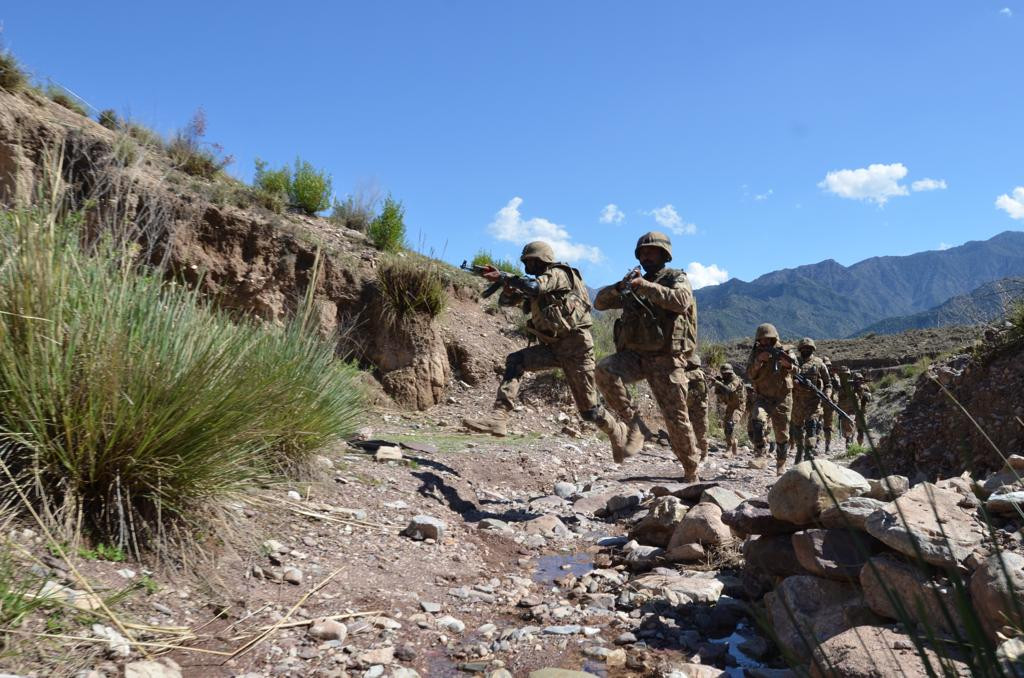 Naik Muhammad Tariq Kayani is among the survivors. When one terrorist reaches him, he grabs his weapon and wrestles him in an attempt to overpower him. In the meantime, the second terrorist shoots Naik Kayani at point blank range. While the sickening violence is played out, a team of 102 Brigade’s QRF (Quick Response Force) reaches the camp. A ricocheting bullet wounds the team commander, Major Haseeb.
Naik Muhammad Tariq Kayani is among the survivors. When one terrorist reaches him, he grabs his weapon and wrestles him in an attempt to overpower him. In the meantime, the second terrorist shoots Naik Kayani at point blank range. While the sickening violence is played out, a team of 102 Brigade’s QRF (Quick Response Force) reaches the camp. A ricocheting bullet wounds the team commander, Major Haseeb.
Capt Asfandyar pleads with Brigadier Inayat to let him jump into the fray. Brigadier Inayat is reluctant. He wants to wait for SSG commandoes to come and conduct the operation. But terrorists are moving quickly, methodically killing anyone and everyone. They are headed for the residential quarters of the camp. It is feared that if the terrorists manage to get there, an APS-style or an even deadlier massacre would ensue.
Brigadier Inayat relents. Capt Asfandyar drives an armoured vehicle straight into the terrorists to pinpoint their positions. He drives back safely through a hail of bullets. An assault party of 12 Punjab Regiment and 15 Baloch Regiment is quickly assembled under the command of Capt Asfandyar. The troops head straight to the mosque, where two terrorists are immediately pinned down and eliminated. As Capt Asfandyar moves to nearby barracks, two more terrorists start firing indiscriminately. But the young officer takes them down within no time.
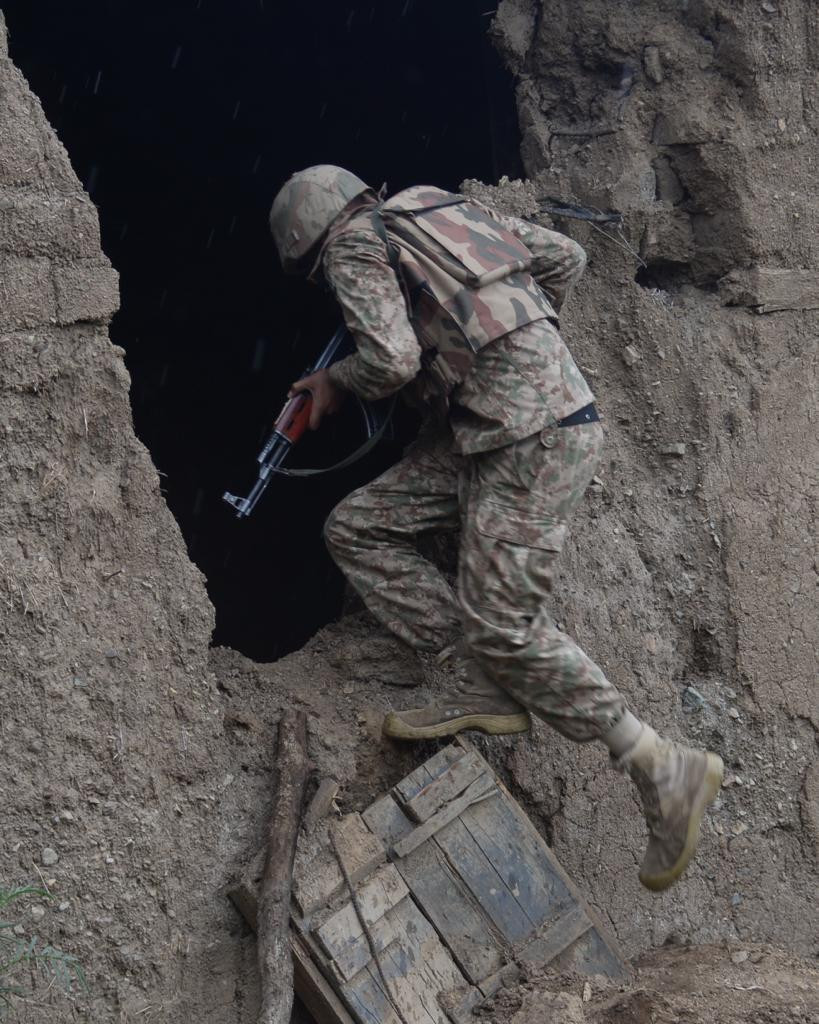
A fifth terrorist suddenly appears and charges at Capt Asfandyar who jumps to take cover behind a concrete pillar. The terrorist is firing ferociously. Capt Asfandyar doesn’t fire even a single bullet. The terrorist stops firing believing he has had his man. This is when Capt Asfandyar emerges from behind the pillar to finish the terrorist off. Around 8am, Capt Asfandyar radios to Brigadier Inayat that the mission is accomplished.
But then, suddenly the eagle-eyed officer sees movement in a barrack. Subedar Saeed volunteers, but Capt Asfandyar himself decides to lead a team into the room. He orders the troops to follow him. As he charges in, a terrorist is spotted recoiled in a corner behind furniture. He is trembling with fear, frozen and unable to fire. Capt Asfandyar, who wants to capture the terrorist alive, asks him to surrender. But the terrorist finally manages to fire. The bullets hit the floor and ricochets to hit Capt Asfandyar in the leg. The daring officer realises that the terrorist will not turn himself in. He fires a burst at the terrorist but not before the militant also fires a salvo. Capt Asfandyar is hit in the face and chest. He dies before he is evacuated to Peshawar for treatment. In this operation, Capt Asfandyar alone took down five terrorists. He is decorated with the Tamgha-e-Jurat, the fourth highest military award of Pakistan, which is awarded for extraordinary heroism in armed combat with an opposing force on Pakistan’s soil or outside its borders.
